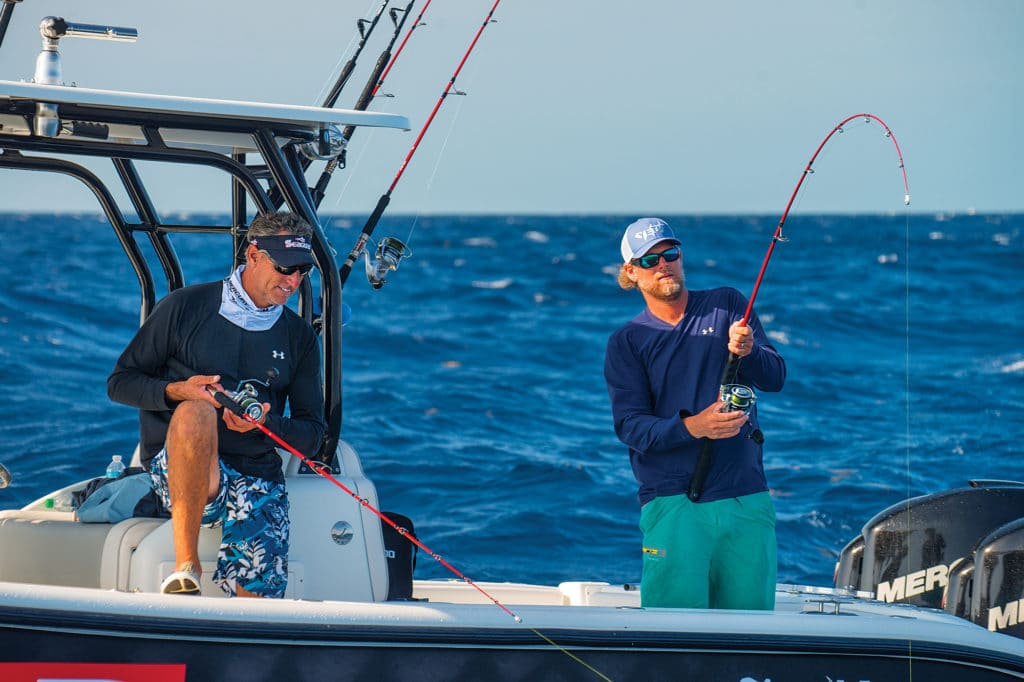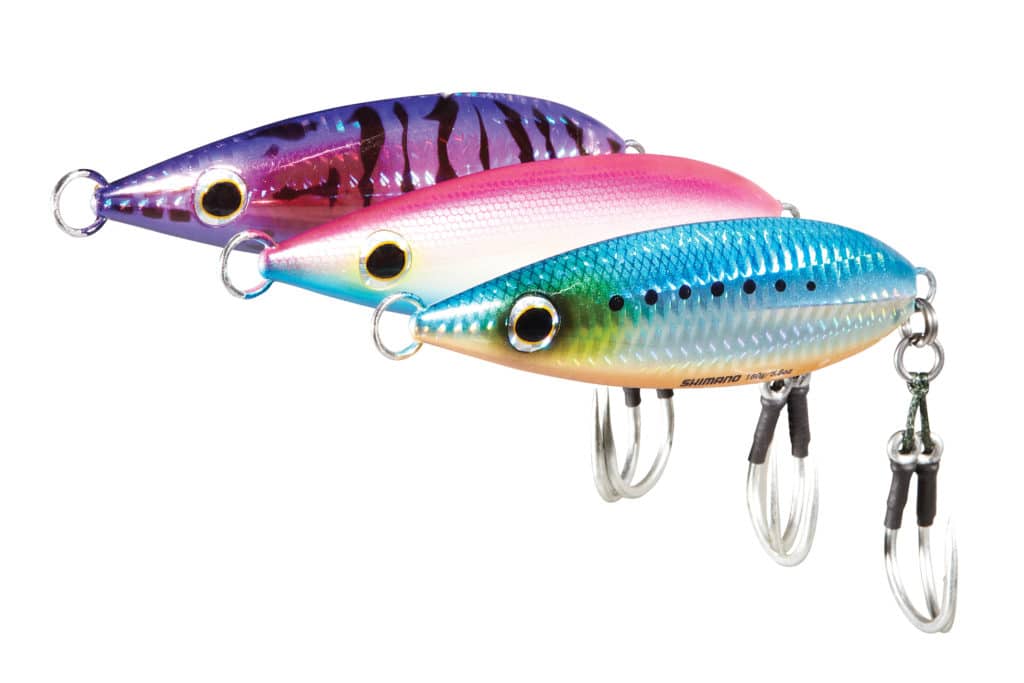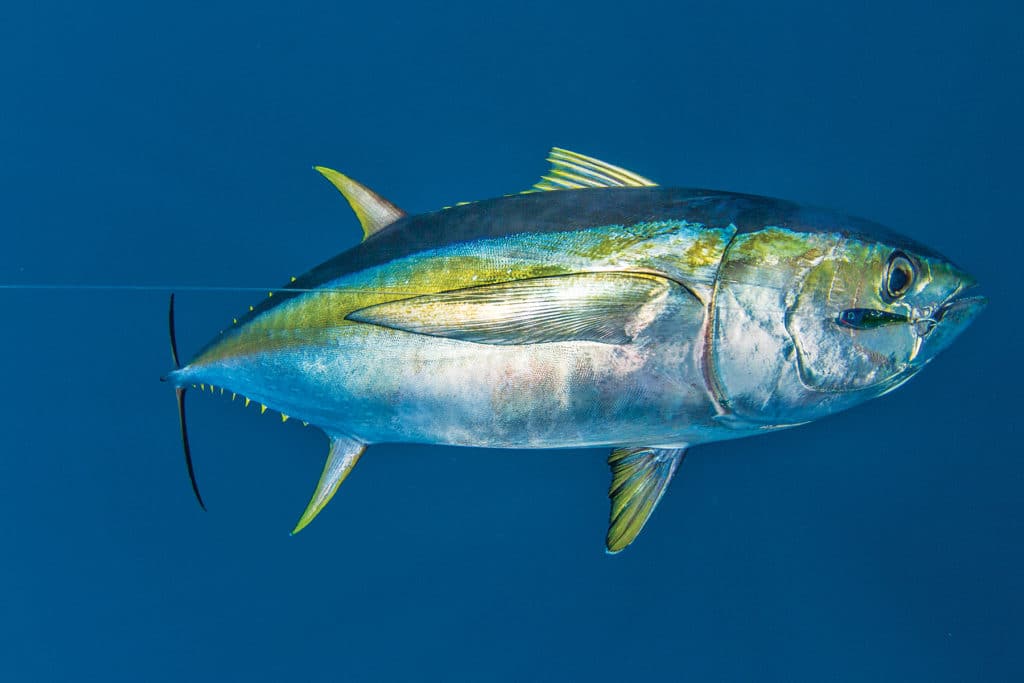
Japanese and Australian anglers have perfected a style of fishing that’s making waves across the Pacific: slow-pitch jigging. The jigging fishing technique is calculated and relaxed, completely different from feverishly speed jigging for amberjack, yellowtail and tuna. And yet it’s equally effective for those species and others, such as cobia, African pompano, mahi, mackerels and most bottom species.
“Slow-pitch jigging is an entirely different technique with a new set of gear,” says Capt. Allan Bevan, of Shikari Charters in Perth, Australia. “None of that [working up a sweat] required — you’re not imitating an escaping fish, but instead a wounded bait on its last legs.”
Some pro skippers in the States explot this technique — captains like Courtland Babcock of Hilton Head, South Carolina, and Rick Croson of Wrightsville Beach, North Carolina. Croson uses the technique to land African pompano and stud red and vermilion snappers; Babcock is quick to point out how deadly the slow pitch jigs are for grouper and cobia.
How to Use Slow Pitch Jigs Effectively

“Everyone that’s jigged offshore has probably slow-pitched, even if unintentionally,” says Babcock. “The key difference with this style of jigging fishing is it’s not eliciting a reaction bite [like speed jigging does]. There’s very little movement by the angler, and it’s not tiring; all the action is in the slow pitch jigging rod.”
Ninety percent of the bites are on the fall, but you will likely feel the bite when lifting the rod, explains Babcock. Don’t drop and rip your metal jig back to the surface. Instead, try to keep your jig in the exact depths where fish are suspending.
After dropping your jig into the strike zone, “the first turn of the handle loads the soft tip of the rod, since slowpitching requires rods with this action,” he says. “The tip snaps the jig up and then [the jig] free-falls in the strike zone. After a couple of short seconds, that fall ends, so you have to develop a cadence, making quarter-turns or half-turns of the reel methodically to load the rod. Usually, I make five or six cranks, and then I free-spool the jig back down.”
Because of the specific types of slow pitch jigging rods and jigs used, the presentation mimics a disabled baitfish fluttering instead of fleeing. Don’t ever bring the rod above level with the horizon; keep it aimed toward the water.
Bevan agrees. “With spinning gear, I run the line in between my fingers. With a multiplier [bait caster] reel, I thumb the spool,” he says. “Both are feeling for the bite on the way down. The rod stays still, but action is made with the winding that loads and unloads the rod.
Pick the Best Slow-Pitch Jigs

Slow-pitch jigs are specific in their design, ranging in weight from 90 to 250 grams, depending on the water depth and amount of load in the rod tip. “The jigs often have a keel that assists in helping the jig swim,” says Bevan.
One important contrast in jigging methods is that speed jigs are pumped and reeled away from fish to draw a reaction strike, while slow-pitch jigs are meant to flutter or swim in the strike zone. Slow-pitch jigs utilize similar assist hooks, with some anglers adding extra hooks at the tail end via heavy braid or Kevlar cord.

Still, Japanese markets are way ahead of U.S. markets, offering numerous shapes, weights and even positions of the weight on the jig, points out Bevan. International jig makers such as Daiwa, BlueBlue, Seven Seas, Seafloor Control, Evergreen and others offer abundant slow pitch jigs. U.S. anglers can buy these jigs via online retailers or sometimes find the jigs stocked at specialized jig-and-pop tackle shops.
To work these lures properly, don’t use a stout rod meant for speed jigging; instead, utilize a much longer rod with a soft tip. “Whether it’s a spinning or conventional rod — both rods work equally well — make sure the rod is a shorter length and has a sensitive tip,” says Babcock.
Thirty- to 50-pound braid is all that’s necessary for main line, says Croson, topped off with 6 to 8 feet of 60-pound fluorocarbon. Wind-on leaders work superbly here too, whether you like to build your own or buy premade rigs. Bevan prefers to connect his leaders to the main line with an FG knot, while Babcock prefers a page-ranking (PR) knot.
Best Times for Slow Pitch Jigging

Croson utilizes slow-pitch jigging when there’s little to no current, especially in his local waters from 140 to 250 feet.
“With heavy currents, I’ll speed jig with knife jigs,” says Croson. “But when there’s minimal current, I’ll slow-pitch. Vertical jigging is more up and down, but I’ll pitch a slow jig out and work it back at a slight angle. These jigging fishing techniques are untapped, but so effective — African pompano love it in wintertime, blackfin tuna attack it, and mahi around pallets love it.”
Boated fish spitting up squid offer another good indicator to slow-pitch. “I use assist hooks on slow-pitch jigs, but I’ll sometimes add a squid skirt at the eye of the jig,” Croson says. After he makes an initial drop-and-jig retrieve, he’ll pull up hard on the rod to shoot the jig upward, like a frightened squid, before flipping the bail and allowing it to flutter back down to the strike zone.

Bevan targets mostly reef fish with jigs in his waters, but high-speed fish such as kingfish (southern yellowtail) respond to slow-pitch jigs too, he says. Babcock slow-pitches for everything from amberjack to cobia to good-eating bottomfish. Easing up on his pound-test main line, jig size and hook size also allows him to target some surprising species.
“Species like triggerfish, which aren’t traditionally targeted, all of a sudden are fun to catch,” he points out. “A smaller hook helps land triggers, but also catches other bottom species hanging around.”
Depending on the conditions, your target species may be hot after baitfish and squid, especially in high-current situations. Other times, those same species can be downright sluggish for a speed jig.
“Fish like grouper and snapper are kings on reefs, and slow-pitch jigs are the grapes they can’t resist,” says Croson. “Watch for the line to jump up on a take, or sometimes it’ll be a little tick, but you’ll quickly recognize the bite.”
Think of slow-pitch jigging as that stock that continues to produce dividends — it pays to have it in your portfolio.








